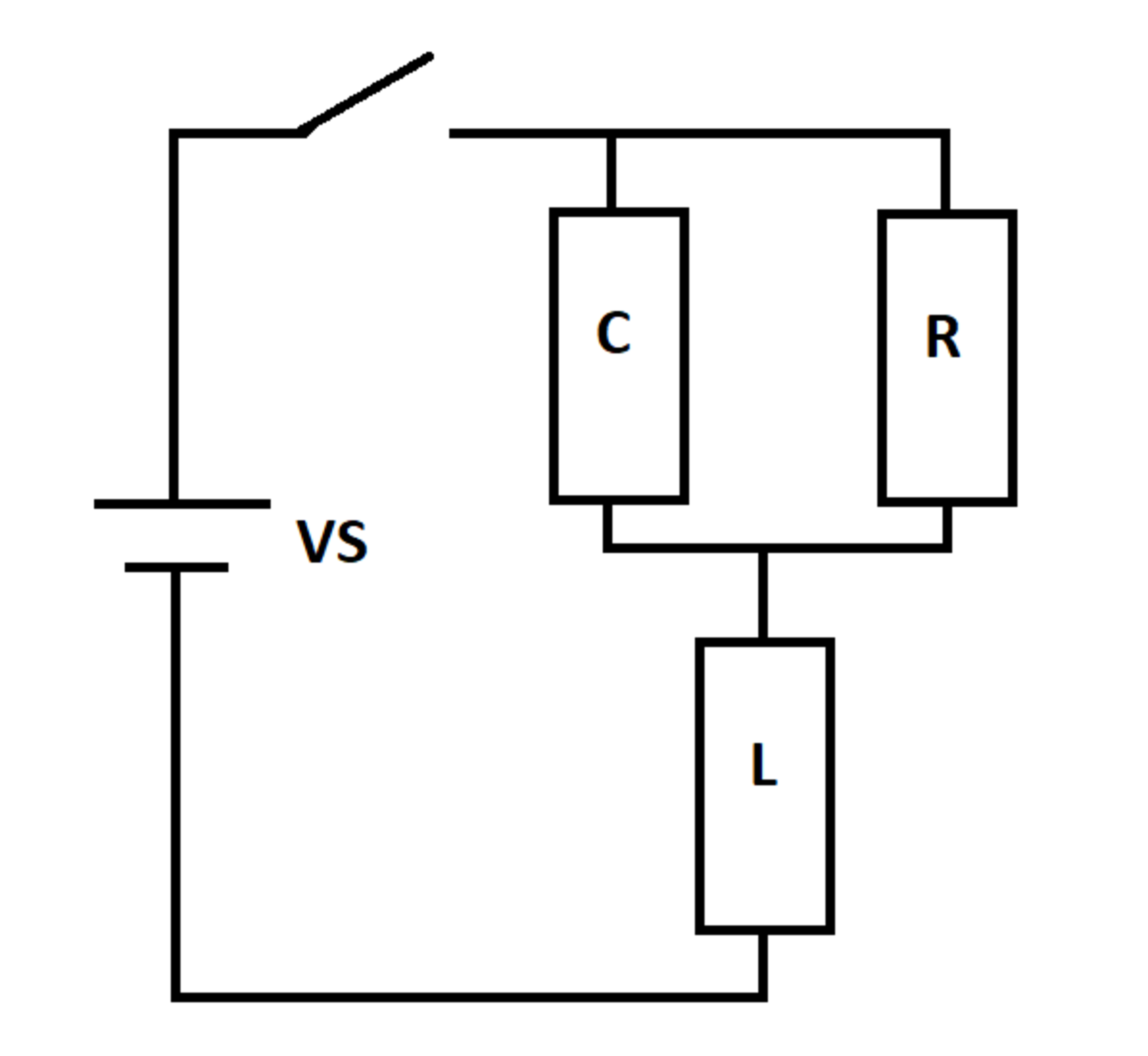RLC Y Circuit (Part 2)
An RLC circuit is excited by a DC voltage source. The switch closes at time , at which time the inductor and capacitor are de-energized.
Let and be the smallest and largest source current values for . Let be the source current right after the switch closes, and let be the steady-state source current as the elapsed time approaches infinity.
Determine the following ratio:
Details and Assumptions:
1)
There are no negative numbers in the ratio
2)
3)
4)
The circuit topology has changed relative to the previous problem

The answer is 2.2498.
This section requires Javascript.
You are seeing this because something didn't load right. We suggest you, (a) try
refreshing the page, (b) enabling javascript if it is disabled on your browser and,
finally, (c)
loading the
non-javascript version of this page
. We're sorry about the hassle.
The circuit equations based on Kirchoff's laws are as follows. I R is the current through the resistor, I C is that through the capacitor and I L is that through the inductor. The charge on the capacitor is Q .
I R R + L d t d I L = V S I R R = C Q I L = I R + I C I C = d t d Q
At t = 0 the charge on the capacitor and all currents are zero.
By manipulating the above equations, we get:
d t d I R + d t d I R = − I R + V S d t d I R = I C
Now this can be rearranged as:
[ 1 1 1 0 ] [ I ˙ R I ˙ C ] = [ − 1 0 0 1 ] [ I R I C ] + [ 1 0 ] V S
Which implies:
[ I ˙ R I ˙ C ] = [ 1 1 1 0 ] − 1 [ − 1 0 0 1 ] [ I R I C ] + [ 1 1 1 0 ] − 1 [ 1 0 ] V S
Also:
I L = [ 1 1 ] [ I R I C ]
Using shorthand notation:
x ˙ = A x + B u ; I L = C x Where: A = [ 1 1 1 0 ] − 1 [ − 1 0 0 1 ] B = [ 1 1 1 0 ] − 1 [ 1 0 ] C = [ 1 1 ] x = [ I R I C ]
Now, numerical integration does the rest. This can also be solved analytically. A plot of I L vs. Time is:
From here, the required answer is computed which comes out to be approximately 2 . 2 5 .